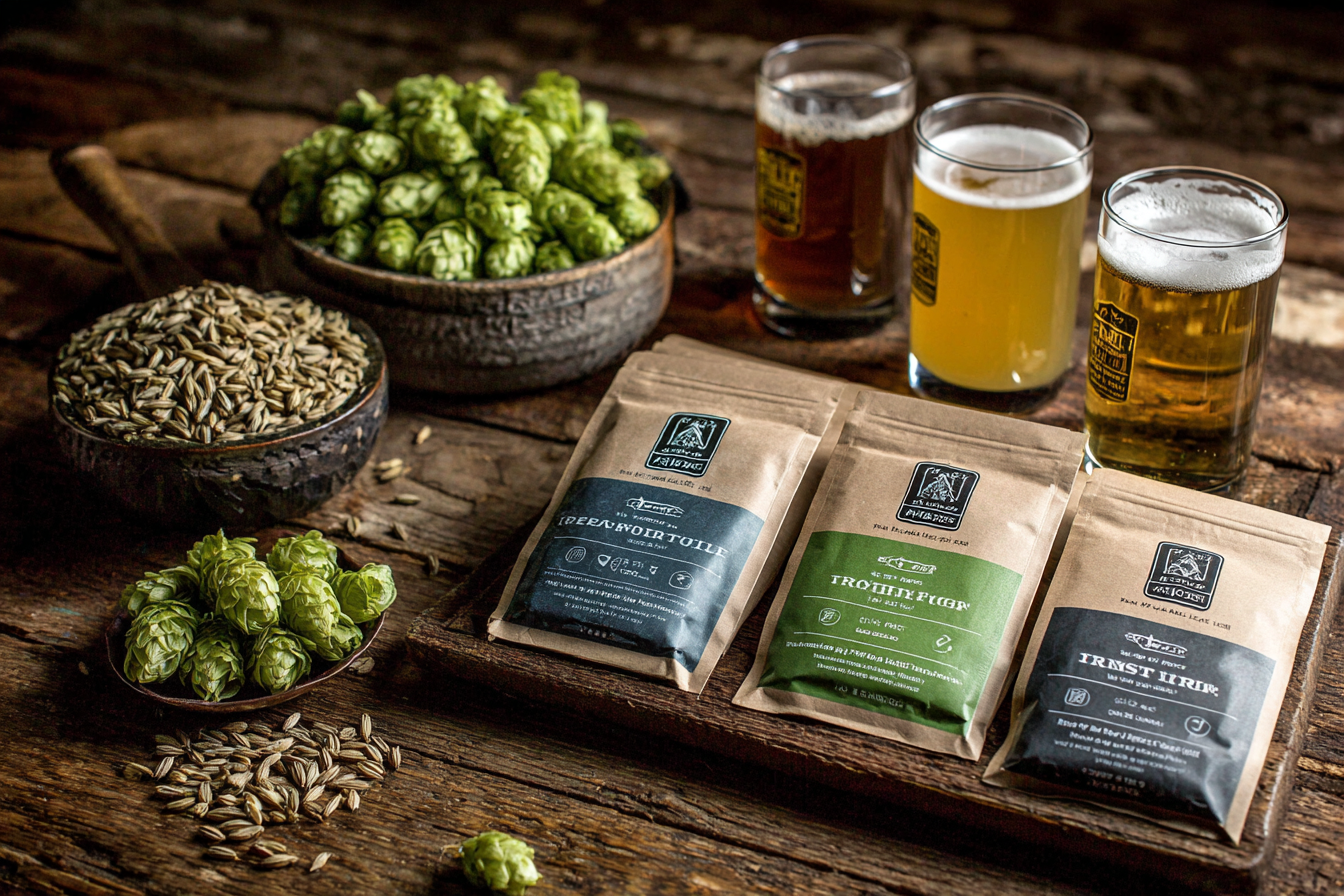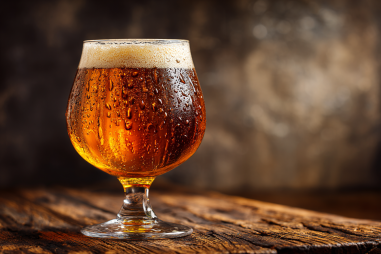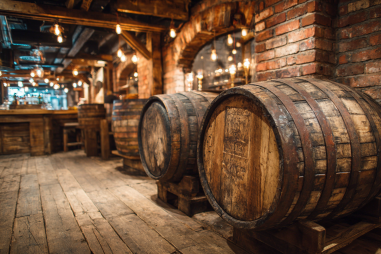American smoked beer offers a unique sensory experience: the rich, bold smoky aroma and flavor combined with the refreshing qualities of a well-crafted beer. This distinctive style demands a thoughtful selection of ingredients that work harmoniously to create its unmistakable character. Whether you’re a homebrewer curious about replicating this style or simply a beer enthusiast interested in what makes these beers stand out, understanding the essential ingredients behind American smoked beer unveils the magic behind each sip.
The Role of Smoked Malts and Types Used
At the heart of any smoked beer is the smoked malt. These malts are the foundation that imparts the signature smoky flavor and aroma, setting smoked beers apart from their non-smoked counterparts. Smoked malt is created by drying germinated barley or other grains over an open flame or burning wood, allowing the smoke to infuse deeply into the malt.
There are several types of smoked malts commonly used in American smoked beers, each contributing different qualities:
- Beechwood-Smoked Malt: Originating from Germany’s classic Rauchbier tradition, beechwood-smoked malt offers a clean and clear smoky character, somewhat akin to a subtle bacon or hearth smoke aroma.
- Bog Smoked Malt: This malt is smoked over peat fires, providing a richer and more intense smokiness reminiscent of Scotch whiskies. Peaty notes lend complexity and depth.
- Cherry Wood or Apple Wood-Smoked Malt: These fruitwoods create a sweeter, milder smoke profile with fruity undertones that complement malt sweetness nicely.
The selection of the specific smoked malt, and sometimes the blend of several, allows brewers to tailor the smoke intensity and flavor profile. The malt type combined with the extent of smoking (light to heavy) influences how dominant or balanced the smoky character will be in the finished beer.
The Importance of Hops and Yeast in Flavor Balance
While smoked malts bring the defining smoky essence, hops and yeast play critical roles in balancing and rounding out the beer’s flavor profile.
Hops – More than Bitterness
Hops contribute bitterness, aroma, and flavor beyond just balancing malt sweetness. In American smoked beers, hop varieties are often carefully chosen to complement or contrast the smoky malt backbone.
- American Hop Varieties: Popular choices include Cascade, Centennial, and Amarillo, which often provide citrusy, piney, or floral notes. These can brighten the beer and cut through the smoky richness.
- Traditional European Hops: Some brewers opt for noble hops like Saaz or Hallertau for a more subtle, earthy bitterness that won’t overpower the malt and smoke.
Balancing the bitterness is key: too much hops can overshadow the smoky malt, while too little can result in an overly sweet, heavy beer.
Yeast – Flavor, Aroma, and Mouthfeel
Yeast selection influences fermentation characteristics, contributing esters, phenols, and mouthfeel. Common yeast choices for American smoked beers include clean fermenting ale strains that allow malt and smoke flavors to shine through without introducing excessive fruity esters.
Some brewers experiment with yeast strains that produce slight spicy or phenolic notes, which can complement the smoky character perfectly. The yeast also helps define the body and carbonation level, affecting how the flavors meld and the overall drinking experience.
Water Profile Considerations
Water is often an overlooked component but is crucial in crafting any beer style, including smoked beers. The mineral content of brewing water affects extraction, mouthfeel, and perceived bitterness.
For American smoked beers, a balanced water profile that is neither too soft nor excessively hard works best to highlight both malt and hop flavors. Moderate sulfate levels can enhance hop crispness, while controlled carbonate levels help balance malt sweetness.
Adjusting water chemistry allows brewers to refine the perceived intensity of the smoke and improve drinkability, ensuring the beer’s flavor components harmoniously coexist.
Additional Adjuncts and Flavor Additives
Beyond the main ingredients, some brewers incorporate adjuncts or additives to bring new dimensions to American smoked beers.
- Adjunct Grains: Wheat, rye, or oats can add body, head retention, and subtle flavor enhancements. Rye, in particular, adds a spicy note that can mesh well with smoky malts.
- Flavor Additives: Ingredients like vanilla, coffee, or spices may be introduced in small amounts to complement or contrast the smoky profile. For example, a hint of vanilla can soften the smoke, while a touch of cayenne can add a surprising kick.
- Wood Aging: Some brewers age smoked beer on charred or toasted wood chips or barrels to introduce additional smoky, woody, or vanilla notes — an advanced technique that requires careful balance.
While adjuncts and additives are optional, they provide brewers with tools to innovate and create unique smoked beer variations that appeal to a broad range of palates.
Ingredient Sourcing and Quality Impact
The quality and origin of each ingredient significantly influence the final outcome of American smoked beers.
- Smoked Malt: Sourcing malt from reputable maltsters specializing in smoking processes ensures consistent and clean smoke flavors free of undesirable aromas or contaminants.
- Hops and Yeast: Fresh and well-stored hops preserve aromatic qualities. Reliable yeast strains with known fermentation profiles minimize off-flavors and unpredictability.
- Water: Using pure, clean water and precisely balancing mineral content is crucial for replicable results.
Small variations in ingredient quality can lead to noticeable differences in the beer’s flavor, aroma, clarity, and mouthfeel, underscoring the importance of attention to sourcing and handling.
Capturing the Perfect Smoky Flavor
American smoked beer is a beautiful melding of smoky malt character with balanced hop bitterness, yeast-derived flavors, and carefully controlled water chemistry. The essence lies primarily in selecting the right smoked malts and pairing them with complementary hops and yeast strains. Additional adjuncts provide a canvas for creativity, while ingredient quality ensures consistency and excellence.
Whether you’re crafting a nuanced beechwood-smoked amber ale or an intensely peaty-smoked stout, understanding the role of each ingredient helps in creating a harmonious and memorable beer. Smoky beers invite drinkers into a world of layered flavors and aromas, rooted in tradition yet reflecting the bold innovation characteristic of American craft brewing.







